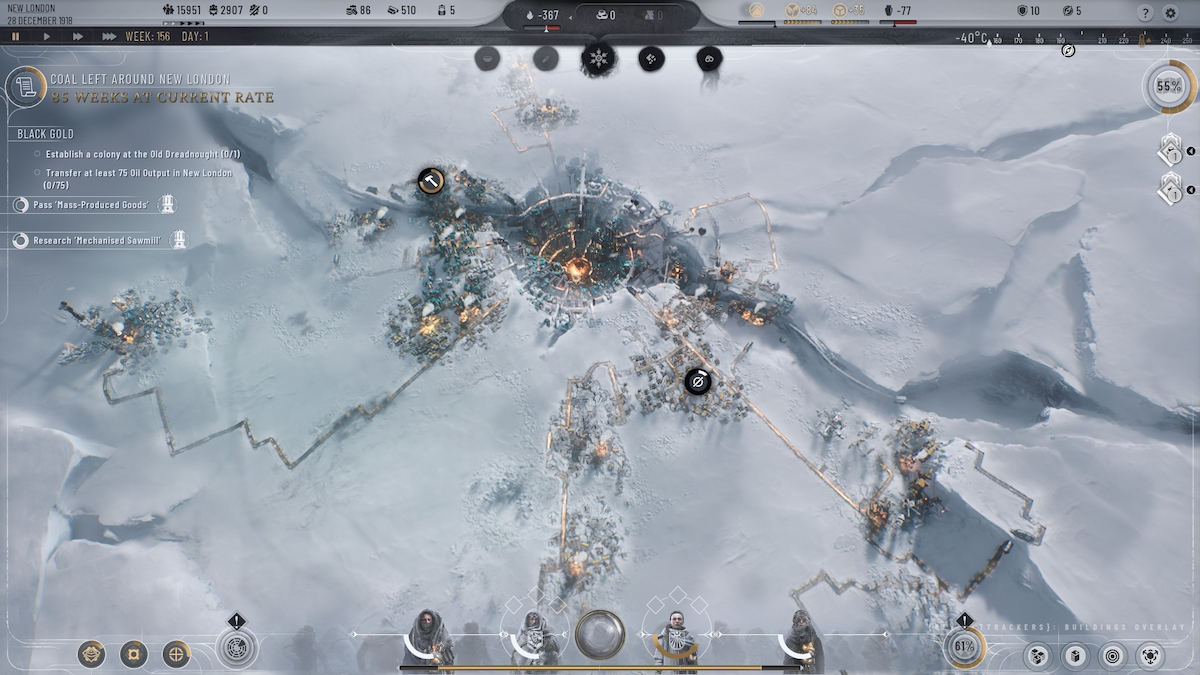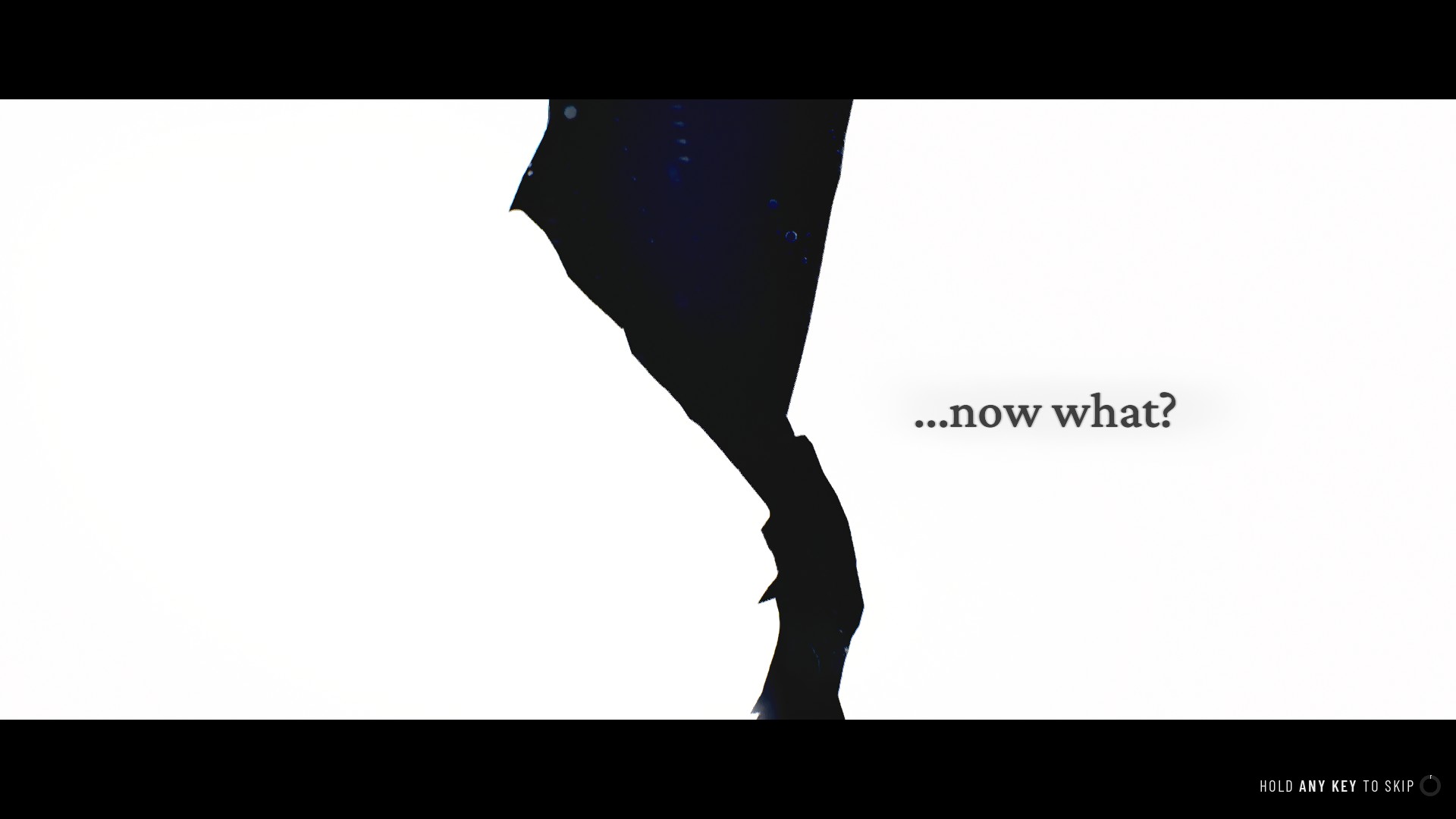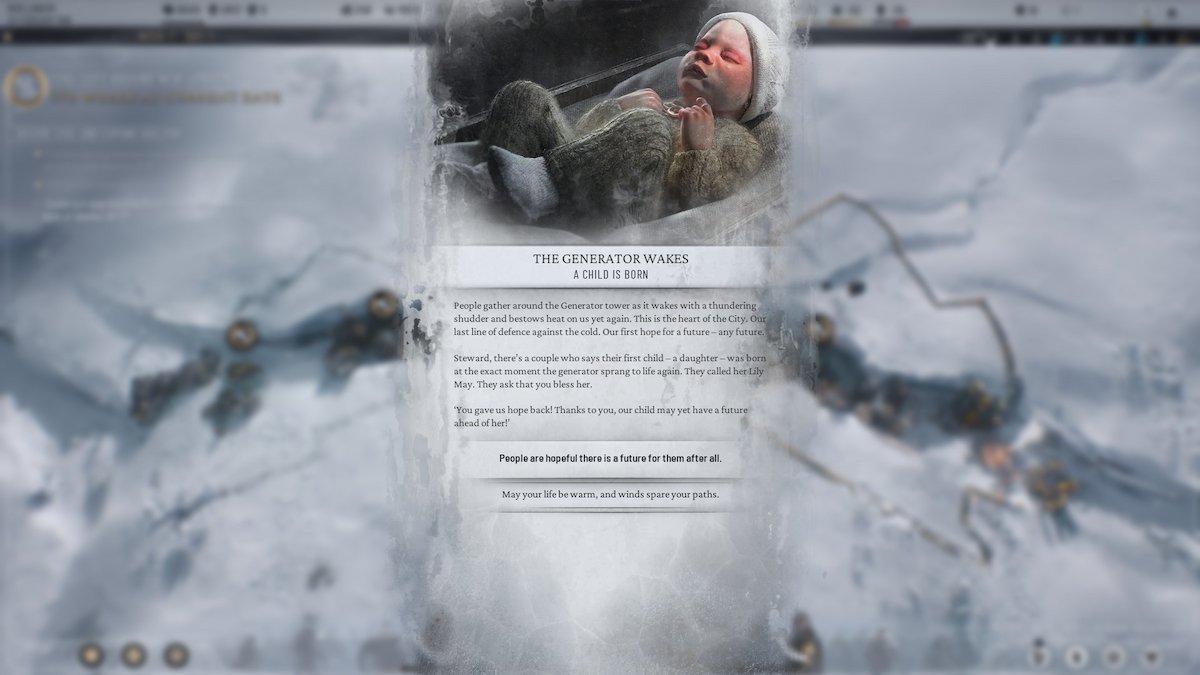
As a seasoned gamer and city planner, I’ve had my fair share of digital metropolises to call my own. But none have quite captured my imagination like Frostpunk 2. This game is not just a sequel; it’s a testament to the survival-strategy genre, a beacon that lights the path for others to follow.
The survival strategy genre has been a staple of gaming for years now, but if there’s one game that really elevated the whole genre to new heights it’s Frostpunk. Now, six years later comes its sequel: Frostpunk 2. Let’s dive into this Frostpunk 2 review and see if the sequel lives up to the greatness of the first game or if it’s just another footnote in history.
The Story of Frostpunk 2: A Continuation

Thirty years on from my initial adventure, I find myself immersed in the narrative of Frostpunk 2. Instead of donning the boots of a Captain this time around, I step into the role of The Steward. This isn’t just a title change, though; as The Steward, I wield an entirely new set of legislative powers.
At that point, the Captain’s leadership style leaned heavily towards authoritarianism due to the frequent whiteouts New London experienced. Compared to this, the Steward in the context of Frostpunk 2 functions more like a president, and the game’s new mechanics reflect this less dictatorial approach.
In Frostpunk 2, the central concept revolves around assuming the role of a generation that emerged following the catastrophic whiteouts. The populace has grown significantly, leading to the formation of distinct social factions, and there’s an increased urgency to rebuild civilization. However, this massive responsibility is placed squarely on your shoulders.
That last point is a sentiment that’s echoed throughout every mechanic and every decision. Every verdict you make will either annoy or please a certain group. Every action condemns or uplifts a certain group. You literally cannot please everyone in this game, which is why I consider it a utilitarian nightmare.
The Old and the New Gameplay Mechanics

Fundamentally, Frostpunk 2 shares many similarities with its predecessor, Frostpunk. The primary objective in Frostpunk 2 is to secure the longevity of your society by acquiring resources, amassing supplies, and preserving order amidst the harshest of conditions.
Instead of just overseeing a solitary settlement and a few peripheral outposts like in the first one, Frostpunk 2 presents a new challenge by requiring you to manage a growing civilization, complete with all the complexities that entails.
Resources become increasingly scarce due to the weight of the population, and society becomes more fragmented as various groups coexist. Additionally, the impending whiteouts constantly pose a threat. Essentially, in Frostpunk 2, it’s a competition between your ingenuity and the game’s tendency to curtail your enjoyment.
Although the fresh rules might seem challenging at times, you can endure and even flourish in this game for an extended period if you handle your people skillfully. It’s all about adapting to the notion that occasionally sacrificing some aspects of society benefits the entirety in the long run.

I have a strong affinity for post-apocalyptic content, but often find that productions don’t accurately portray what the end of the world might truly be like. However, Frostpunk 2 stands out as it effectively captures the atmosphere in an authentic manner.
Indeed, this seems to be the end of the world as we know it, yet humanity persists. In challenging circumstances, much like in the game Frostpunk, our natural instinct is to unite. There’s certainly disagreement and struggle, but it’s not escalating into widespread warfare. Instead, people are focusing on one common goal – survival. They may have varying strategies for achieving that.
In my gaming experience, Frostpunk 2 truly hits the mark. It’s less about traditional gameplay and more about immersion. While I have the freedom to play as I wish, the game rewards kindness towards my citizens and penalizes ruthless rule. Essentially, it feels like being a leader whose actions have real consequences, whether they lean towards compassion or tyranny.
I appreciate the sound design too, which significantly enhances the overall immersive feel. If a law is passed, citizens are informed via loudspeakers. Upon focusing on a particular district, you can listen to the lively sounds of its daily activities. The art direction also offers an intriguing twist. At first glance, it appears monochrome, but upon closer inspection, you’ll discover a rich, colorful world full of detail.

In Frostpunk 2, there’s an engaging gameplay pattern that persistently unfolds throughout both its campaign and sandbox modes. Initially, it’s a race against time to gather resources. However, once you set up the fundamental supply system, the gameplay experience largely remains consistent from then on.
In Frostpunk 2, the process often involves proposing new strategies or concepts, then you patiently observe. You dispatch your scouts for further investigation, followed by another period of waiting. The recurring theme of patience and predictability in its game mechanics is a significant drawback, particularly noticeable on lower difficulty levels. This prolonged waiting is most bothersome.
Ramping up the challenge may reduce waiting times somewhat, yet it won’t entirely eradicate the issue. Boosting complexity mainly amplifies the number of problems encountered rather than improving their nature, an aspect I find disappointing.
It’s clear that we should revamp the difficulty control a bit to keep the game interesting and challenging over time. Introducing a significant crisis system could add variety, making each playthrough unique instead of feeling repetitive like past sessions.
Final Verdict

All things considered, I find Frostpunk 2 a fitting follow-up to the initial Frostpunk. It retained all the elements that made the first game exceptional and broadened its theme by incorporating features like societal stratification, administrative dynamics, and research aspects, thereby elevating the overall gaming experience.
Additionally, it’s worth noting that the game is exceptionally well-crafted. During my playtime with the pre-launch version, I didn’t stumble upon a single glitch, be it visual or otherwise. This is already quite remarkable, but when you take into account the numerous new systems the game manages to synchronize, it becomes even more awe-inspiring.
Is the second installment of Frostpunk as impressive as the first? While it’s still quite good, it doesn’t quite match up to the original in terms of innovation. The initial Frostpunk was a groundbreaking idea that significantly shaped the survival strategy genre and served as inspiration for many subsequent games. However, while Frostpunk 2 is an excellent game overall, it doesn’t offer the same level of revolutionary change as its predecessor did.
- Incredible polish
- Decent replayability
- Immersive atmosphere
- Slightly monotone gameplay loop
- The difficulty might be a turn off for some
Read More
- Clash Royale Best Boss Bandit Champion decks
- Vampire’s Fall 2 redeem codes and how to use them (June 2025)
- Mobile Legends January 2026 Leaks: Upcoming new skins, heroes, events and more
- World Eternal Online promo codes and how to use them (September 2025)
- Clash Royale Season 79 “Fire and Ice” January 2026 Update and Balance Changes
- Best Arena 9 Decks in Clast Royale
- Clash Royale Furnace Evolution best decks guide
- FC Mobile 26: EA opens voting for its official Team of the Year (TOTY)
- Best Hero Card Decks in Clash Royale
- Clash Royale Witch Evolution best decks guide
2024-09-18 05:38